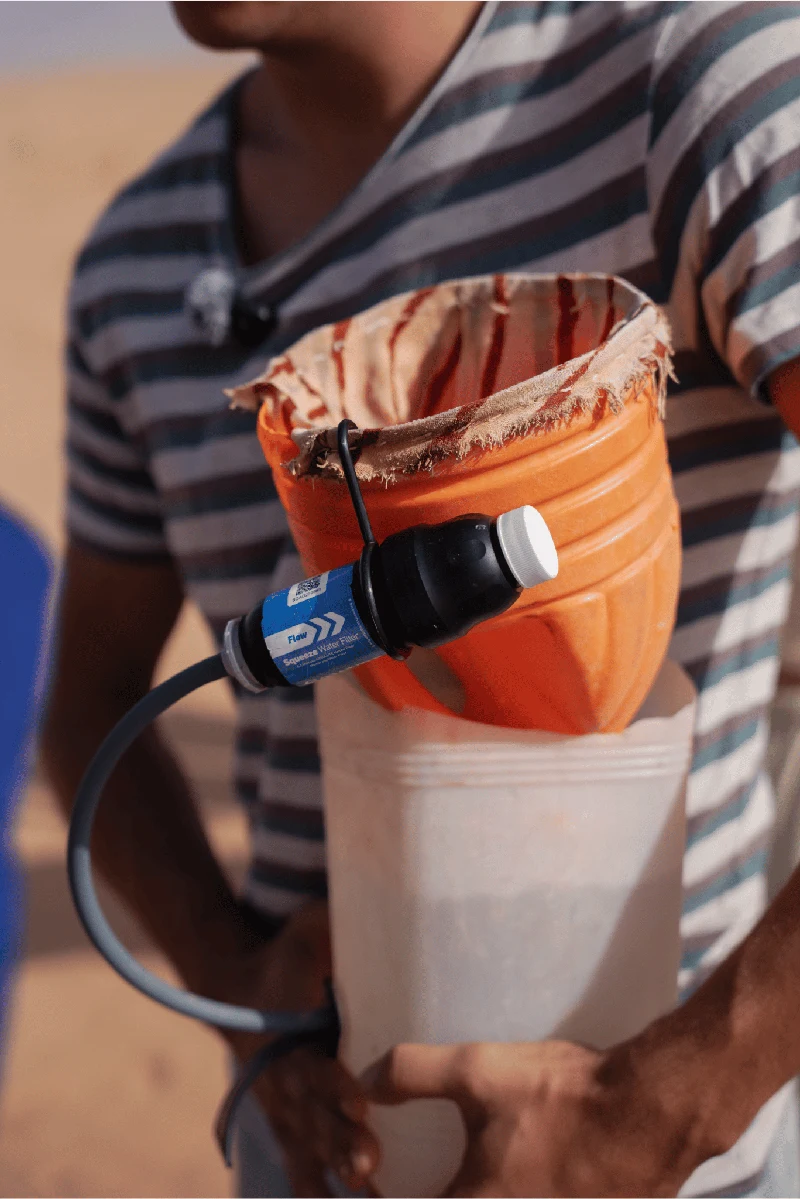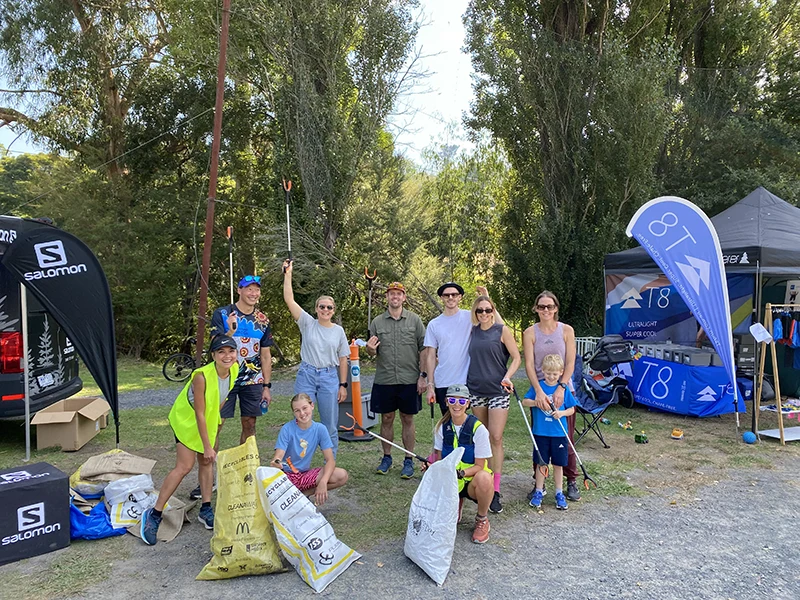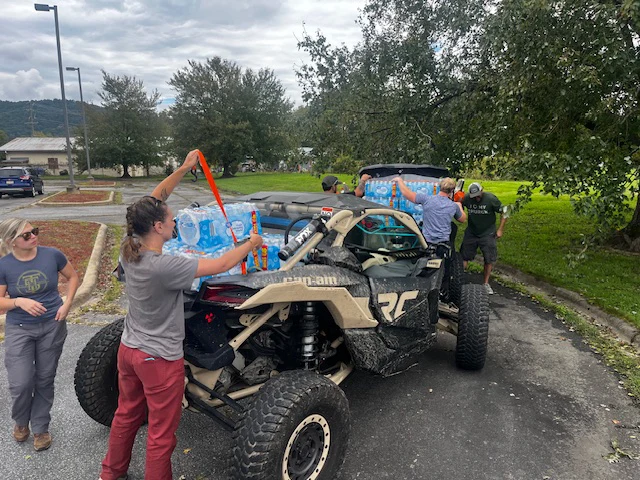

As a hiker, I am constantly confronted by the amusing and frustrating irony that my favorite thing to do is directly affected by my disability.
I have Cerebral Palsy which, in my case, affects my legs, making them overly tight, inefficient and nearly always painful. My love for long-distance hiking might seem odd given the extra level of discomfort, but for me the mountains are where I feel whole. Pitting myself against the challenge of an incline helps me feel whole and capable like nothing else does.

Where I find joy is in conquering expectations. My whole life there has been a voice in the back of my head reminding me that I’m different, lesser, broken. I hike to silence that voice. I hike with something to prove, to myself, to the world, and to the kids with CP who don’t yet understand just how big they can dream.
To learn more about Cerebral Palsy and my journey into hiking check out Getting Sidetracked on the Sawyer Blog.

The Trail
The Trans European Alpine Route (TEAR) is a collection of several long-distance trails originally developed and hiked by Canadian Dylan Ivens in 2019. It passes through 16 countries and utilizes portions of 31 trails (not including alternates). It traverses over 4,000 miles, hugging major mountain ranges as much as possible. Completing the route in 7 months requires an average pace of 18 miles/day, with an average elevation change of 7,600 feet per day.
While the Appalachian Trail is steeper mile for mile than the TEAR, the 18 mile/day pace required means an average daily change of 6984 ft compared to my average of 5,562 ft on my 2022 Appalachian Trail thru-hike.

The Cause
As I planned my journey, I realized I needed a strong purpose to be able to overcome the obstacles I would surely face. I felt such overwhelming gratitude for being able to hike at all and wanted to pay it forward in some way.
I thought about my own journey and all the therapy that has enabled me to hike. Thirty-three people a day are diagnosed with Cerebral Palsy making it the most common life-long physical disability in the world. Therapy early in life is shown to be highly effective for folks with CP, the earlier the better, yet many families don’t have the resources to get proper treatment for their loved one.
For those of us fortunate enough to reach a “normal” level of daily life function, the tools to push ourselves further are limited. There haven’t been many studies on the effects of long-term intense exercise on individuals with CP. It’s hard for us to figure out how to effectively train our bodies compared to the general population. Once we’re at a place where we don’t need assistance for daily activities, support typically ends.
Assistive technology for CP and other physical disabilities is antiquated. Much of the commonly used tech is decades, if not a century old.
I am looking to change that. That is my Why.

After reaching out to several different non-profits, I solidified a partnership with Cerebral Palsy Alliance Research Foundation (CPARF) to raise funds for Cerebral Palsy Research. CPARF is a nonprofit organization that funds research around the early detection and intervention of CP, chronic pain, assistive technology, and regenerative medicine.
Together we aim to raise $40,000 for life-changing research so that others with CP can get proper treatment and will have the opportunity to chase their crazy dreams.
Click here to learn more about the campaign.

The "Right Way"
Resources on Ivens site mountainandme.ca gives an overview of the trail in 7 sections.
Section 1. The Balkan Mountains -Bugaria
Section 2. The Balkan Gap - Serbia, Kosovo, Macedonia, Albania,
Section 3. The Dinaric Alps - Albania, Montenegro, Bosnia and Herzegovina, Croatia Slovenia
Section 4. The Alps - Slovenia, Italy, Austria, Lichtenstein, Switzerland
Section 5. The Central Massive - France
Section 6. The Pyrenees - France, Spain, Andorra
Section 7. The Cantabrian Mountains -Spain

Here's where it gets weird….
In 2019, Ivens was able to hike the entire trail 1-7 in order from west to east. Due to the addition of Croatia to the Schengen Zone in January 2023, and the recent addition of Bulgaria in 2024, a full thru-hike for non-Europeans is nearly impossible.
The Schengen Agreement allows free movement between member countries without passport control, which is great for visitors. American citizens (and citizens of several other nations) may enter the Schengen Area without applying for a visa. Also great!

The problem is the time restrictions. Visa-free entry to the Schengen Area is valid for 90 out of a rolling 180 days. What that means is if I spend 90 days in Schengen, I will then be required to spend 90 days outside Schengen before I re-enter. Gone are the days of jetting off to Serbia for a weekend in Belgrade and grabbing a fresh 90 days on the flight back to a Schengen member state.
When I saw the news in late December 2023, my hopes of a successful hike were initially shattered. I would now have an additional 500 miles to cover within the first 90 days, and I would have 500 fewer miles to occupy my 90 days out of Schengen. I wracked my brain for a solution.

Buckle up.
- Start with Section 1 in early March, hike to the French border by the end of March.
- Catch a flight to Bulgaria and a bus to the Black Sea Coast.
- Sprint an average of 30 miles/day through the Kom Emine.
- Take an alternate route to enter Serbia by mid-April.
- A possible detour off the official route to exit Bosnia and Herzegovina further west.
- Sprint across Croatia and through the Alps
- On reaching the Massif Central, flip to the Pyrenees
- Hike the Haute Route Pyrenees before the snows.
- Finish with the Massif Central
It’s a doozy. With that said, I’m glad for the extra challenge. It’s a chance to show what I can do if I put my mind to it!

The Gear: Water Filtration
I’ve been a fan of the Sawyer Squeeze since I got my hands on one as a summer camp counselor 7 years ago. It’s super easy to use and I can rest easy knowing that my water is safe from bacteria, protozoa, cysts, and microplastics. Other filter systems do exist, but I prefer the Sawyer system for compactness and ease of cleaning. While some “Shake to Clean” filters may seem simpler, in my experience flow rate degrades much quicker and isn’t restored as well with cleaning.

To follow along with my hike look for updates @Sidetrackhiker on Instagram.
From the Squad
Campfire conversations with our community, from Squad Members and Ambassadors to Brand Partners and the Sawyer team.

















